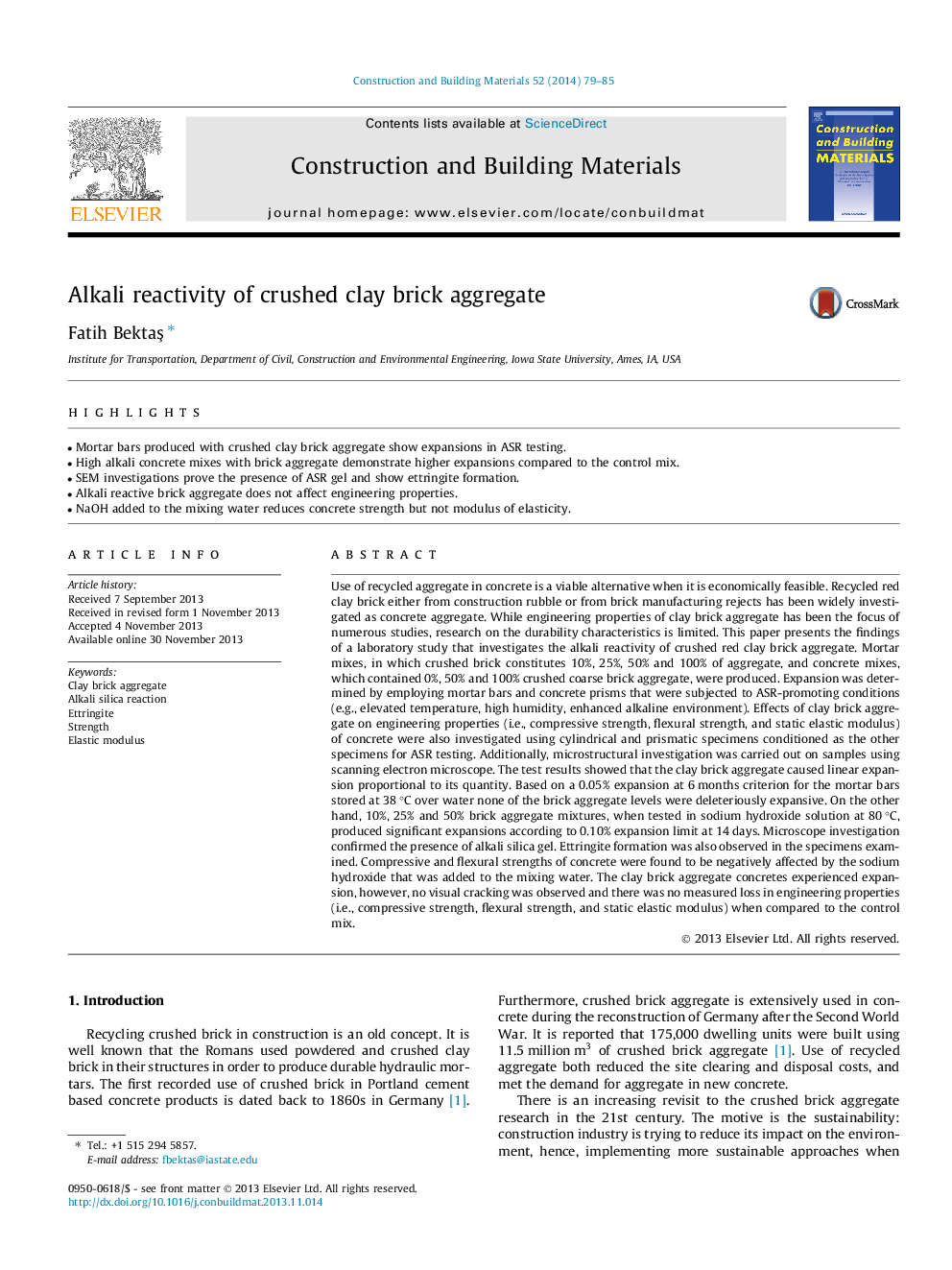| کد مقاله | کد نشریه | سال انتشار | مقاله انگلیسی | نسخه تمام متن |
|---|---|---|---|---|
| 6724192 | 503607 | 2014 | 7 صفحه PDF | دانلود رایگان |
عنوان انگلیسی مقاله ISI
Alkali reactivity of crushed clay brick aggregate
ترجمه فارسی عنوان
واکنش پذیری قلیایی سنگ آهک خرد شده سنگ آهک
دانلود مقاله + سفارش ترجمه
دانلود مقاله ISI انگلیسی
رایگان برای ایرانیان
کلمات کلیدی
آجر خاک رس، واکنش سیلیکا قلیایی، اترینگیت، استحکام، مدول الاستیک
موضوعات مرتبط
مهندسی و علوم پایه
سایر رشته های مهندسی
مهندسی عمران و سازه
چکیده انگلیسی
Use of recycled aggregate in concrete is a viable alternative when it is economically feasible. Recycled red clay brick either from construction rubble or from brick manufacturing rejects has been widely investigated as concrete aggregate. While engineering properties of clay brick aggregate has been the focus of numerous studies, research on the durability characteristics is limited. This paper presents the findings of a laboratory study that investigates the alkali reactivity of crushed red clay brick aggregate. Mortar mixes, in which crushed brick constitutes 10%, 25%, 50% and 100% of aggregate, and concrete mixes, which contained 0%, 50% and 100% crushed coarse brick aggregate, were produced. Expansion was determined by employing mortar bars and concrete prisms that were subjected to ASR-promoting conditions (e.g., elevated temperature, high humidity, enhanced alkaline environment). Effects of clay brick aggregate on engineering properties (i.e., compressive strength, flexural strength, and static elastic modulus) of concrete were also investigated using cylindrical and prismatic specimens conditioned as the other specimens for ASR testing. Additionally, microstructural investigation was carried out on samples using scanning electron microscope. The test results showed that the clay brick aggregate caused linear expansion proportional to its quantity. Based on a 0.05% expansion at 6 months criterion for the mortar bars stored at 38 °C over water none of the brick aggregate levels were deleteriously expansive. On the other hand, 10%, 25% and 50% brick aggregate mixtures, when tested in sodium hydroxide solution at 80 °C, produced significant expansions according to 0.10% expansion limit at 14 days. Microscope investigation confirmed the presence of alkali silica gel. Ettringite formation was also observed in the specimens examined. Compressive and flexural strengths of concrete were found to be negatively affected by the sodium hydroxide that was added to the mixing water. The clay brick aggregate concretes experienced expansion, however, no visual cracking was observed and there was no measured loss in engineering properties (i.e., compressive strength, flexural strength, and static elastic modulus) when compared to the control mix.
ناشر
Database: Elsevier - ScienceDirect (ساینس دایرکت)
Journal: Construction and Building Materials - Volume 52, 15 February 2014, Pages 79-85
Journal: Construction and Building Materials - Volume 52, 15 February 2014, Pages 79-85
نویسندگان
Fatih BektaÅ,
